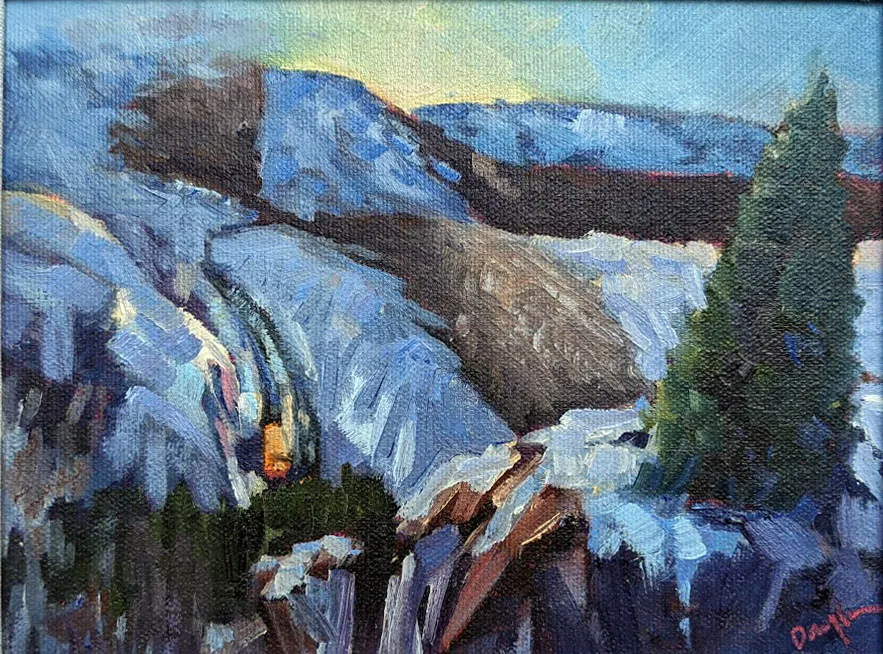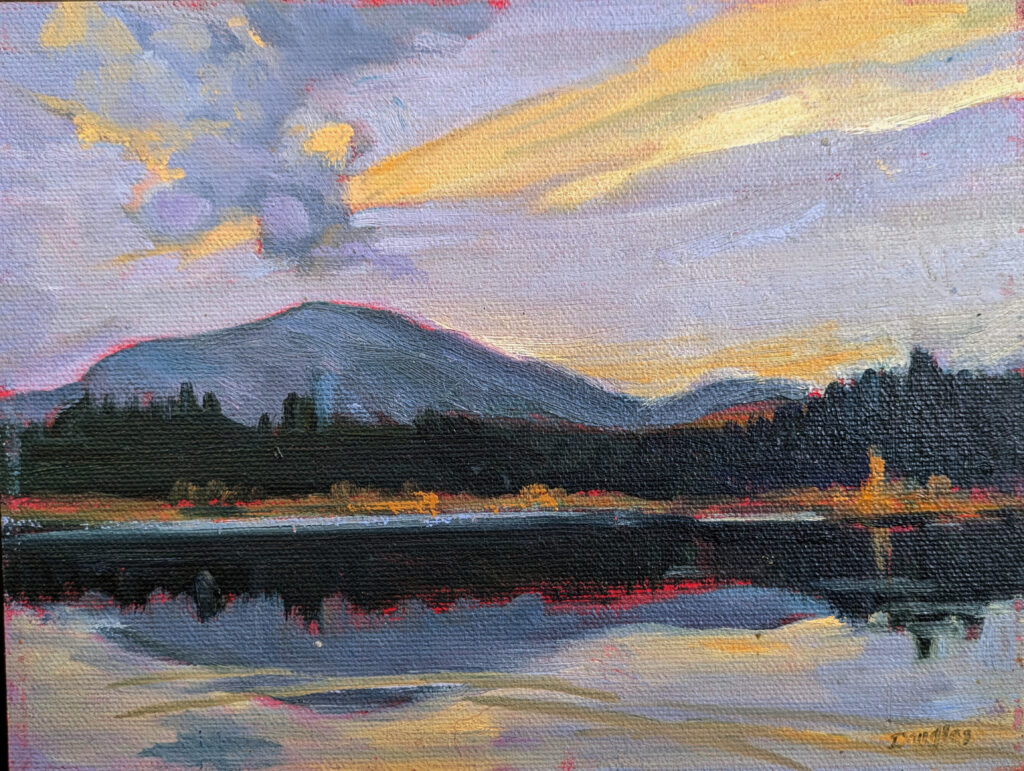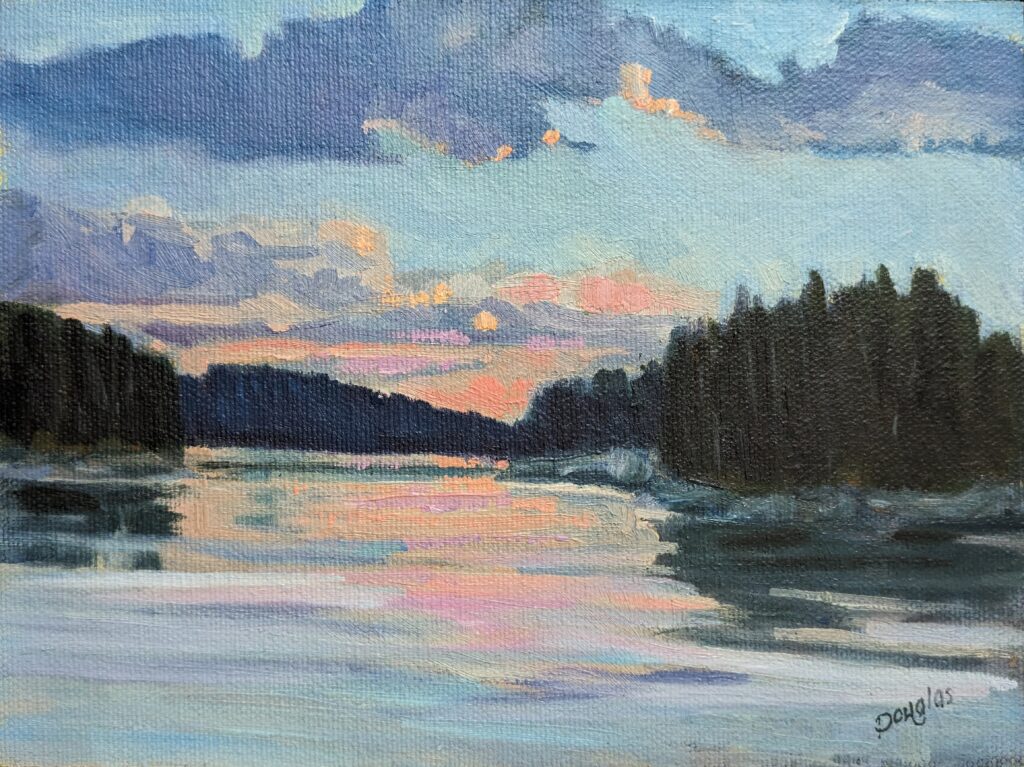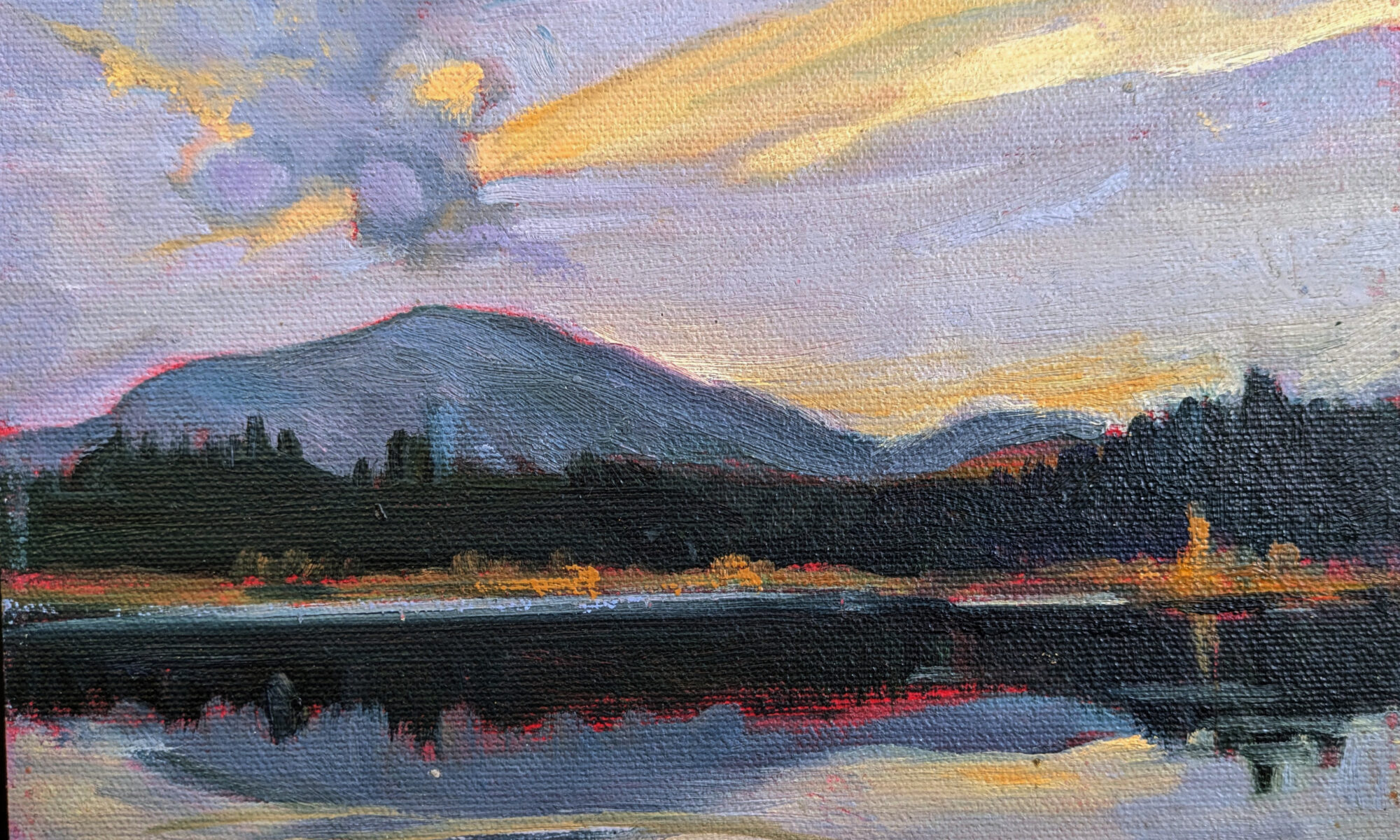
“In the Rock-Paper-Scissors scheme of things, does acrylic ever top oil in terms of being taken seriously by collectors and curators?” Cheryl Shanahan asked me. It’s a great question. Although acrylics have been around since the middle of the last century (like me), they are not as commonly used as oils by the top tier of painters.
There are, of course, some acrylic painters who’ve been taken very seriously indeed: David Hockney, Robert Motherwell, Mark Rothko, Helen Frankenthaler, and Roy Lichtenstein, to name just a few. Acrylics lend themselves more to color field painting than they do to fine modeling. And until the advent of retarders, acrylics were difficult to use en plein air. Standard heavy-body acrylics are a constant struggle against premature drying when used outdoors.

What makes a painting valuable?
The value of any work of art rests mostly in the name of its creator, a fact which has infuriated artists since the advent of art. Of course, if he or she is dead, the supply of new work has dried up, which drives prices up. That’s why I’m so tempted to fake my own death.
In 2019, an exhaustive study of the works of Joan Miró noted, “Miró’s works command higher prices, ceteris paribus *, when they were painted on canvas, were sold at Sotheby’s and in New York City or London, were traded during the evening session and depending on the period in which they had been painted, the size of their surface area, the number of words used to describe the respective lot and whether they had appeared in an art book. The prices of Miró’s paintings increased substantially between 2003 and 2008 and then declined, coinciding with the global financial crisis of 2009.” You can’t discount market manipulation when considering what makes a painting valuable.

There are oil painters who will tell you there’s a hierarchy of mediums. “I had a watercolor friend who attended a plein air convention and she felt as if the oil painters were dismissive,” Cheryl said. “I listened to another oil painter friend on a podcast, and she was poo-pooing acrylics a bit. Her take was that galleries she was interested in were showing only oils.”
In my experience, many gallerists are already saddled with too many artists and will tell importuning artists the first thing that comes to mind to get rid of them. No gallery would reject a tempera painting by Andrew Wyeth, a watercolor by John Singer Sargent, or a house-paint drip painting by Jackson Pollock.
Having said that, there is some justification for the price differential between media. Some mediums are more time-consuming and the materials cost can be higher.

Having taught many students in oils, acrylics, watercolor, and pastel, I have never been able to figure out what makes a person gravitate to a specific medium. They’re each capable of being either painterly or linear. But although I’m reasonably facile in them all, I gravitate to oils, followed by watercolors. It’s not that I think they’re better; in fact, if I were twenty again, I’d probably be using spray paint. It’s simply that it’s easiest to pick up the same kit day after day. If I flitted between them, I’d spend all my time setting up and none of it painting.
*That’s just a fancy way of saying, ‘everything else being equal.’
Mark next Friday on your calendar
Grand opening
Carol L. Douglas Gallery at Richards Hill
Friday, September 13, 5-7 PM
394 Commercial Street, Rockport, ME 04856
For more details, see here.
Reserve your spot now for a workshop in 2025:
- Advanced Plein Air Painting, Rockport, ME, July 7-11, 2025.
- Sea and Sky at Acadia National Park, August 3-8, 2025.
- Find Your Authentic Voice in Plein Air, Berkshires, MA, August 11-15, 2025.
- Immersive In-Person Fall Workshop, Rockport, ME, October 6-10, 2025.

